Having dressed film stars (Quadrophenia, Absolute Beginners, Young Soul Rebels) and countless music videos, it’s unsurprising that Roger Burton sought to not only document his time in the business but also the vast attire he’s amassed along the way. Rebel Threads (Laurence King Publishing) is that book, spanning the range of British youth subcultures from the war onwards and delving into the fashions which gave them their name.
Despite once owning a shop called PX and kitting out the cast of Quadrophenia, it’s four legs rather than two-wheeled scooters these days for Roger, or at least his Contemporary Wardrobe collection which has been housed in the former Horse Hospital in Bloomsbury since 1993 and enjoys its 25th anniversary this year. Stevo caught up with the former Midlands mod in among his racks of vintage clobber to talk Trevira, Toyah and Trojan for us.
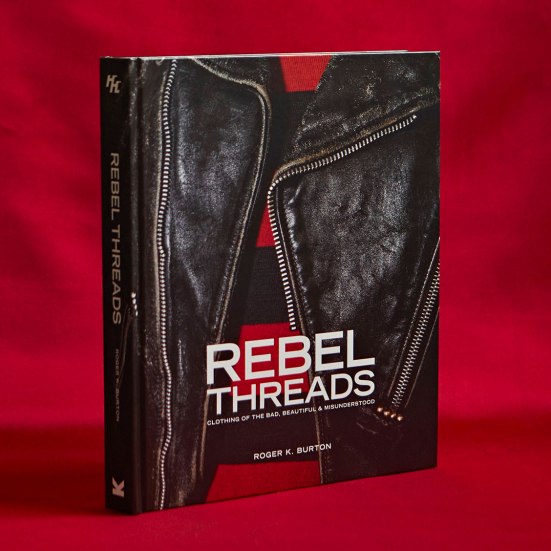 Film director Julien Temple wrote the foreword for your book?
Film director Julien Temple wrote the foreword for your book?
I started working with Julien in 1982. In fact, I believe the first video I ever did with him was for the Beat’s ‘Save it for Later’. It’s funny because a lot of the clothes I used in the video were seen later in Absolute Beginners, which in a way was like one big music video, and now many of these clothes feature in Rebel Threads…
Thanks to magazines like the Face, iD and Blitz there was a lot of interest in period fashion and in a sense music videos became like the pages of a magazine, however there was a real shortage of good authentic clothing on the scene, so a lot of recycling from Contemporary Wardrobe took place, in just one instance. I have this fabulous original 1940s American Zoot suit that in 1981 I styled on Terry Hall from the Specials in ‘Ghost Town’, the suit was in so much demand, I also styled it on the Kinks’ Ray Davies in their 1983 music video ‘Come Dancing’.
I styled countless music videos for Julien during the 80s and they were always on an epic scale, like mini feature films packed with characters in colourful street styles of the time, and great fun to work on. He was as fascinated by the then current youth culture as I was, so together we made a good team.
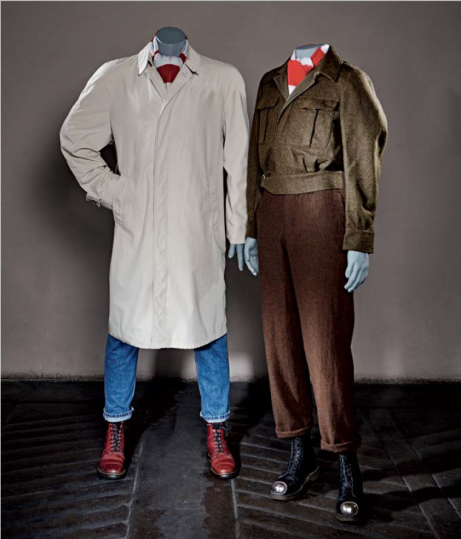
The collection began with some of your grandfather’s ties – did you think it would end up as large as it has?
I was fortunate in that my grandfather who was a builder, and my uncle a farmer, were quite stylish, and they were both the right age to be into clothes in the 1940s and 50s so although neither of them was anywhere near my size, I did rather well raiding the wardrobes for period ties, and these ties formed the basis of my collection. They mostly had stylised prints such as lightning flashes or zigzag patterns, sub-Art Deco, similar to those seen in Brighton Rock, but there were also a few hand-painted abstract designs like those seen in American noir movies.
I have been a collector for as long as I can remember, as a kid it was everything from badges to exotic cigarette packets, but of course, I had no idea in the 60s that my clothes collection would eventually turn into the serious and well-respected archive it has become. In fact, I only ever really collected stuff for my own pleasure, so it was a real bonus when other people started to appreciate it and the great thing is because we only hire items from the collection, people can enjoy them for as long as they like, providing they are prepared to pay, but at the end of the day I always get them back.
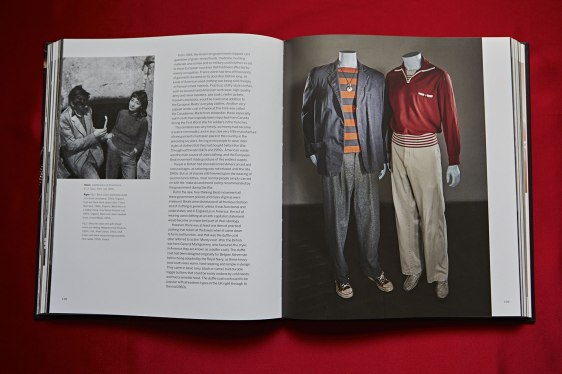 How did you source the clothes at the beginning?
How did you source the clothes at the beginning?
I first began to find 30s and 40s clothes at second-hand stalls on Leicester market, also at jumble sales, and second-hand junk shops in and around the city, then eventually I discovered an army surplus store in the marketplace called Wakefields that had brand new old stock menswear that they would put outside the store whenever they had a sale.
This was a great find as they had large quantities of stock that I would later sell to shops like Acme Attractions on the Kings Road in the 70s. As demand grew beyond my own needs I started to go to other towns like Birmingham where there was a large rag market.
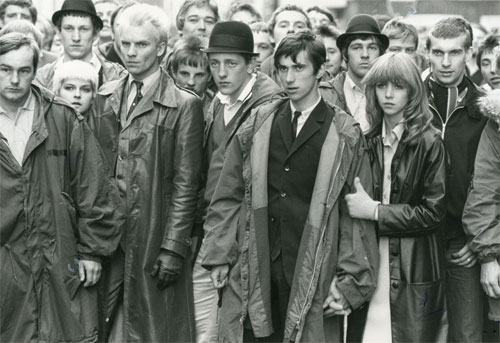 Was Quadrophenia the first big production you worked on? How did that come about?
Was Quadrophenia the first big production you worked on? How did that come about?
We originally got involved in a small way with supplying clothes for a movie called The Rutles in 1977 through the film’s costume designer. But Quadrophenia was really the first film production we were asked to supply in large quantities to. It came about by chance really, we happened to have a stall on Portobello Road market one Saturday in 1977, and this guy who was an art director on the movie happened to be passing by and noticed that we had a good selection of 60s suits and dresses for sale on the stall. My partner Rick Carter, also an ex-mod, got talking to him about the project, and by Monday we had met with the film’s producers and secured a contract to supply authentic mod clothes for the film, also both being ex-mods we became consultants on the look of the clothes.
How involved were you with the film?
My role on the film was chiefly as a supplier and consultant, and although I met most of the actors during production I was only able to advise on their look unofficially as I was not part of the production team and not in the film union. Quadrophenia was a relatively low budget movie, and as was common practice at that time with low budget movies, the wardrobe supervisor took the place of a costume designer and covered both roles.
 As a former mod was authenticity always on your mind?
As a former mod was authenticity always on your mind?
We were always trying to make sure that the clothes we supplied were not only authentic but being worn in the correct way, by liaising with the wardrobe supervisor, however not being on set made it almost impossible to scrutinise, especially with other people supplying clothes too. One of the first things we were asked to supply was around 100 original M51 and M65 style parkas, but at that time there was some sort of EU regulation in force that they could not be sold to the public as issued to the military, so basically many of the hoods were separated from the parka shells, but we managed to locate a package of hoods in Europe and had to get them sewn back together. Also, it was and still is almost impossible to find men’s suede coats from the 60s, and as these were an integral part of a mod’s wardrobe we had some made up in different colours. However, the art director thought that the public would not believe that boys wore pink suede coats so he wouldn’t allow them to be seen in the film.
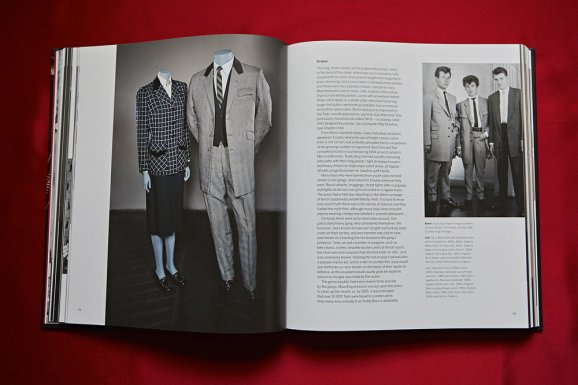 Where did this obsession for detail come from?
Where did this obsession for detail come from?
I have always been interested in how street styles have depicted in movies over the years, and where they originally started out in the 30s, 40s and 50s being quite authentic. By the time we got to the mid-60s, clothing styles in movies were becoming more of a costume designer’s interpretation of a period, which depending on the film is not necessarily a bad thing, but sometimes this inaccurate distortion of a style can become accepted as historically correct, which to my mind is a bad thing.
The book shows a lot of fondness for post-war Spivs and wide boys as its beginning of subculture and style?
I grew up in the 50s in a country village watching glamorous 30s and 40s black and white noir movies, and was particularly attracted to those shot in English studios with glamorous clothes that were so American influenced, generally you saw nothing like them living in the country except for my uncle and aunt who, for farmers, were real Spivs. Him in his brown gabardine suits, two-tone suede brogue shoes and novelty ties, and her in pencil skirt, leopard print swing coat and matching hat, they even had a black 50s Austin Princess limo with a cuddly toy leopard lying in the back window, to me they looked like film stars.
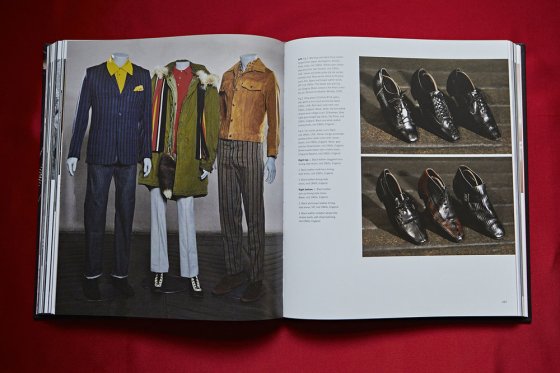 You mention how Prince of Wales check and houndstooth found favour with the teds after that?
You mention how Prince of Wales check and houndstooth found favour with the teds after that?
During the early 50s, tailors who were making drape suits for young teds in East End London were quite keen to emulate the upper-class Edwardian suits being seen around West End gentleman’s clubs, and they began using fabrics such as houndstooth and Glenurquhart check as a pastiche of the look. This distinctive check had been made popular by the Prince of Wales some years earlier, in fact so much so that the check would almost exclusively become known as Prince of Wales check. After falling out of favour with the teds the fabric became popular again with the mid 60s Dandies, and then in the early 70s, it was adopted by suedeheads, again aping upper-class styles.
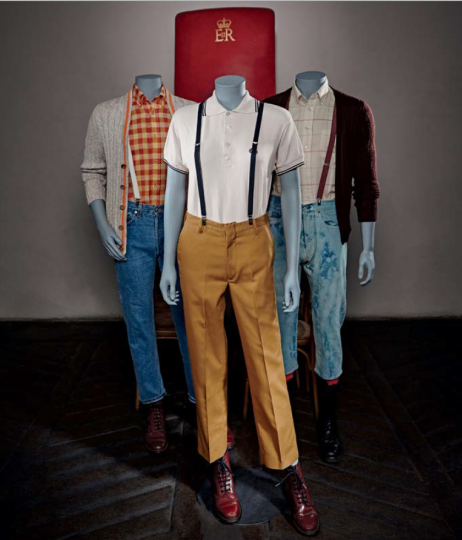 Likewise, the book gives an affectionate and balanced look at skinhead, but has them wearing braces over Fred Perrys and also in wartime clothes?
Likewise, the book gives an affectionate and balanced look at skinhead, but has them wearing braces over Fred Perrys and also in wartime clothes?
I remember seeing kids in Leicester in the late 60s who were sporting the skinhead haircut and wearing variations of WW2 army jackets and trousers, collarless grandad shirts, and donkey jackets, probably because they thought they were a cool anti-fashion working class uniform and good way of making a statement, plus the fact they could be found quite cheaply in surplus stores around the country. Of course, it could have just been a regional thing, as with braces being worn over Fred Perrys at that time?
As I said at the beginning of the book, the styling of the outfits is, of course, subjective and purely my own personal point of view, and I respect the fact that certain subcultures or movements in other countries, towns or even local areas will have worn their clothes in a different way, where these looks probably had different meanings…
Text: Andrew Stevens
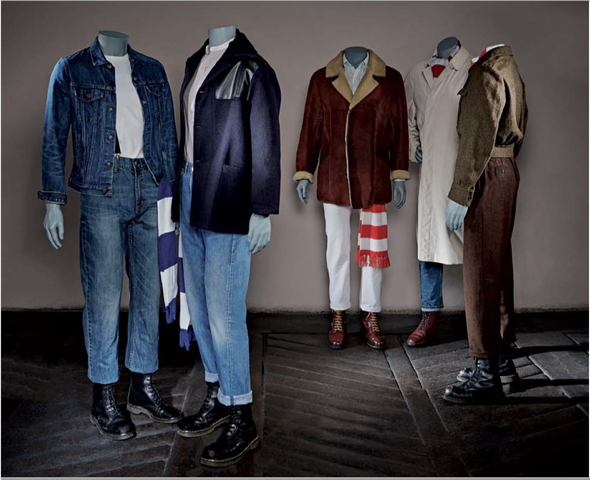
Got to say this – NEVER saw anyone in WW2 battledress, not a mod not a rocker, not a skinhead, not a hippy, no one back in the day. Only ever saw one picture of a skinhead in a donkey jacket back in the day; if I ever saw one on the street it hasn’t stuck in my memory, and I would have assumed it was a bloke coming home from work anyway.
LikeLike
I can say that yes I wore a donkey jacket and also an army battledress jacket this would of been early 70s as a very young skinhead I also wore a wrangler jean jacket before I had a Levi jean jacket. My first Harrington was a prince of wales check one as a kid then in Herne Bay you wore what your parents could afford or what your older mates gave you.
My first Ben Sherman was a hand me down from my cousin John I used to wear brutus and Arnold palmer shirts also.
Great days oh to be a teenager again 😉
LikeLiked by 1 person
Ah! Where I hung out the whole skinhead thing had passed by the early 1970s.
LikeLiked by 1 person
Great interview!
LikeLike